An Expert on Dehumidification.
An HVAC system (Heating, Ventilation, and Air Conditioning) is responsible for maintaining comfort in residential, commercial, and industrial buildings by regulating temperature, humidity, and air quality. It controls the indoor environment by providing heating, cooling, ventilation, and air purification.
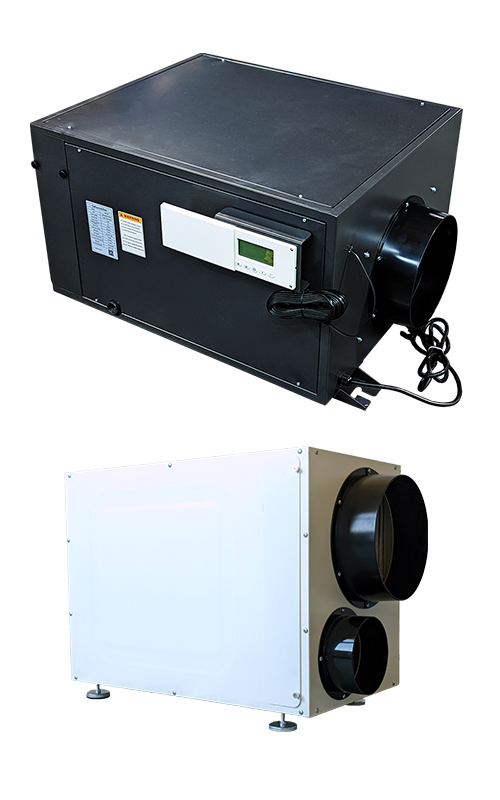
Primary Applications of HVAC Systems
1. Residential Applications
Single-family homes, apartments, condominiums, and multi-family buildings.
2. Commercial Buildings
Offices, retail stores, shopping malls, hotels, restaurants, and banks.
3. Industrial Facilities
Manufacturing plants, processing facilities, data centers, and warehouses.
4. Healthcare Facilities
Hospitals, clinics, laboratories, and nursing homes.
5. Educational Institutions
Schools, colleges, universities, and research facilities.
6. Agriculture and Greenhouses
Greenhouses, livestock barns, and controlled environment agriculture (CEA) setups.
7. Hospitality and Recreation
Hotels, resorts, gyms, spas, theaters, and sports arenas.
8. Entertainment and Cultural Spaces
Theaters, cinemas, museums, and concert halls.
9. Transportation and Airports
Airports, train stations, bus terminals, and ports.
10. Data Centers
Data centers, server rooms, and IT facilities.
11. Marine Applications
Cruise ships, commercial ships, submarines, and oil rigs.
12. Cleanrooms and Laboratories
Semiconductor manufacturing, pharmaceutical production, and biotechnology labs.
How Does Each Component of an HVAC System Work?
Heating Component
Raises the indoor temperature to a comfortable level during colder months.
Ventilation Component
Helps maintain indoor air quality by exchanging stale indoor air with fresh outdoor air. It also controls moisture and helps remove contaminants, odors, and excess heat.
Air Conditioning Component
Cools the indoor air by removing heat and moisture, which is essential in warmer climates or during summer months.
Ductwork
Responsible for distributing conditioned air (both heated and cooled) throughout the building. It also returns air back to the HVAC system to be reconditioned.
Air Quality Control
Modern HVAC systems often include equipment to improve indoor air quality. Control indoor humidity by adding moisture during dry conditions or removing excess humidity during moist conditions.
Next part, we will mainly talk about how to apply a dehumidifier in your HVAC system.
How to Duct a Dehumidifier in an HVAC System?
1. Separate Ducts
The best way to duct dehumidifiers is to give them their separate ducts. The intake side connects to a grille (or multiple grilles). The supply side connects to a grille or registers (or more than one). If you apply our ZETA, WH, or HD series dehumidifiers, you can use a K30 panel to control the dehumidification system. This is the simplest way to set up a dehumidifier.
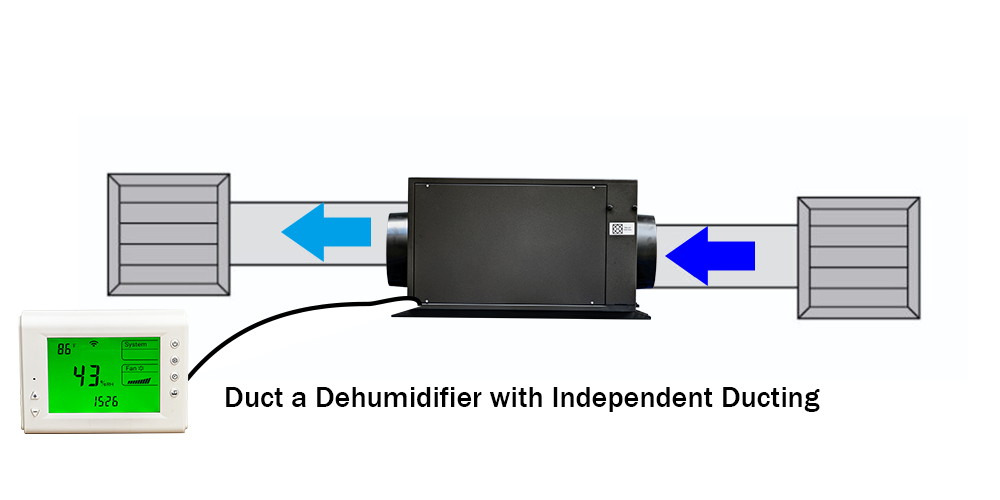
Pros
The simplest ducting method.
It's easier to get the right airflow since there's only one blower affecting the pressure in the duct.
The dehumidifier doesn't need to be close to the air conditioner.
Cons
May require more space to put the ducting in.
Because the dehumidified air is warm, you have to find a place to send it that won't cause comfort issues.
Rating:
2. Dry air sent into the air conditioner ducts
The second best method is to send dry air into the air conditioner ducts. This makes things a little more complicated because now you have two blowers moving air and creating a pressure differential in the duct. You also have two options. The dehumidifier intake will have its own grille, but you can put the dehumidified air into the return side or the supply side of the air conditioner.
From the image below, you can see which is the better option:
Supply side. When you put dry air on the return side, you take away some of the work of the air conditioner. Typically, for people who live in humid climates, the return air going into the air conditioner needs to be cooled and dehumidified (sensible and latent cooling). By putting dehumidified air on the return side, the incoming air is drier. The air conditioner works less and the dehumidifier works more. Therefore, you end up using more energy and running the dehumidifier more than with the better configuration shown below.
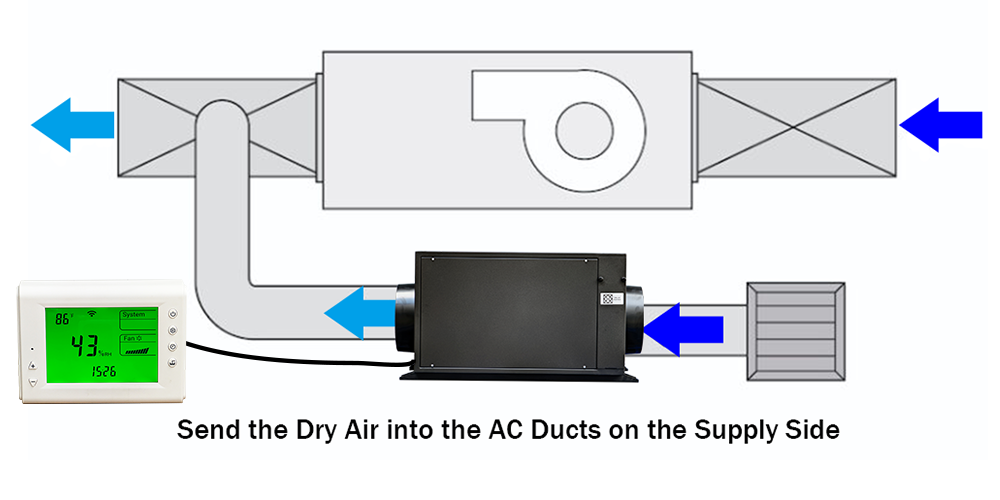
Pros
The dehumidified air gets tempered with the conditioned air before it enters the conditioned space.
The dehumidified air is distributed throughout the house or area.
The number of ducts required can be reduced compared to separate ducts.
Cons
The supply duct size may need to be increased to handle the additional airflow.
If you put dehumidified air on the return side, it will increase energy use.
Rating:
3. Bypass Method
In this configuration, the dehumidifier intake draws air from the return side of the air handler, dehumidifies it, and then sends it to the supply side to mix with the conditioned air. Some of the air bypasses the air handler, hence the name. This method can reduce the amount of ductwork required.
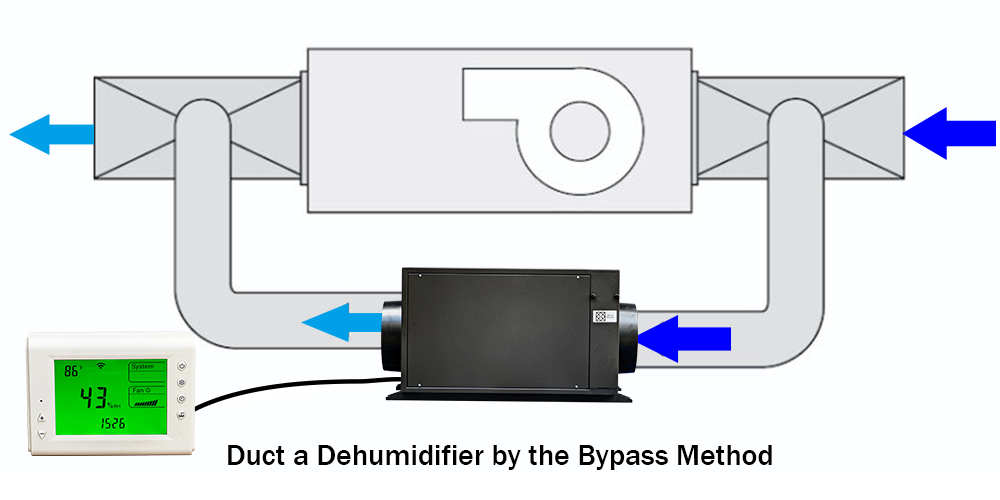
Pros
The number of ducts needed can be reduced compared to separate ducts.
The dehumidified air is tempered with the conditioned air before entering the conditioned space.
The dehumidified air is distributed throughout the house or area.
Cons
Additional return and supply ducts may be needed to handle the additional air flow.
Dampers may be needed to prevent backflow through the dehumidifier.
A method is needed to prevent shorting when the air handler is not running. This could be a second damper, or keeping the air handler running while the dehumidifier is running.
Rating:
4. Injection Method
The last method here is to connect the intake and dry air sides of the dehumidifier to the same side of the air handler. In the diagram below, they are connected to the supply side. Putting them on the return side has the same problem of reducing the air conditioner's dehumidification capacity as mentioned in method 2 above.
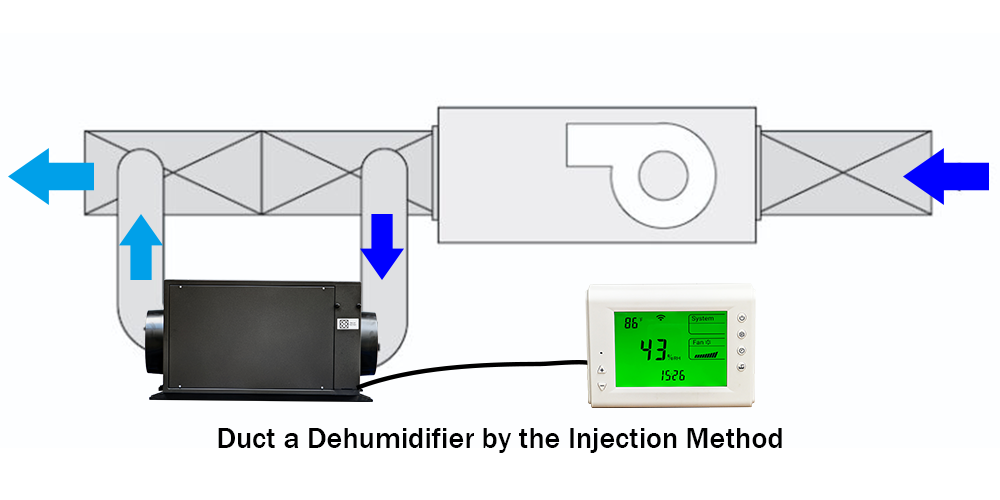
Pros
The number of ducts needed can be reduced compared to separate ducts.
The dehumidified air is tempered with the conditioned air before entering the conditioned space.
The dehumidified air is distributed throughout the house or area.
Cons
Additional return and supply ducts may be needed to handle the additional air flow.
Dampers may be needed to prevent backflow through the dehumidifier.
A method is needed to prevent shorting when the air handler is not running. This could be a second damper, or keeping the air handler running while the dehumidifier is running.
Rating:
Notes
To simplify design and operation, separate ducts are your best choice. Connecting to the air conditioning duct makes things complicated because you have two fans moving air and creating a pressure differential. When you connect two duct systems, you have to consider relative air flow because you want the dehumidified air flow to be less than the air conditioning air flow. Some of the above configurations also require larger ducts, dampers, and different control methods (i.e., running the air handler while the dehumidifier is running).
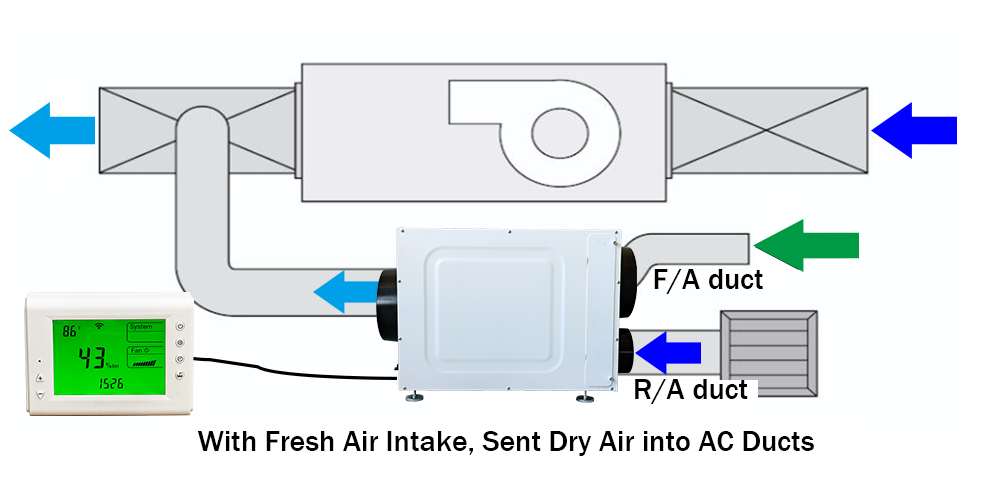
Another duct issue this article didn't mention above is the fresh air dehumidifier. The above diagram shows a duct that brings in outdoor air as well as dehumidifies from the home. The R/A duct (for return air) is the inlet for the recirculated air in the home. The F/A duct (for fresh air) is bringing in outdoor air. They all pass through the dehumidifier and are then distributed to the interior space. You can set up this type of system using any of the four dehumidifier ducting methods mentioned above. You just need additional ducting to bring in the outdoor air. The image above shows a vented dehumidifier set up using method 2.
HVAC systems are essential for maintaining comfort, safety, and operational efficiency across various applications. Whether in homes, offices, hospitals, or industrial facilities, HVAC systems play a critical role in providing proper climate control and air quality management. By adjusting for specific environmental conditions, they ensure human comfort, protect equipment, and improve overall productivity and well-being.
PREAIR
Post time: Sep-26-2024

